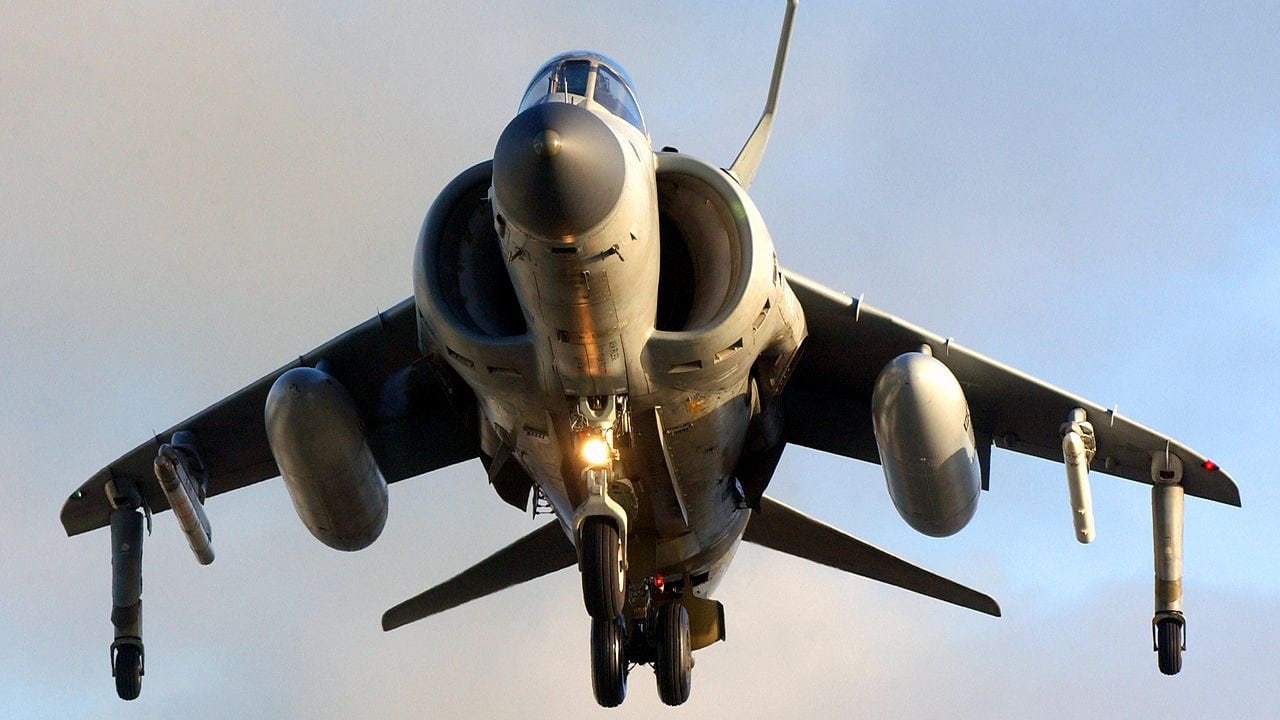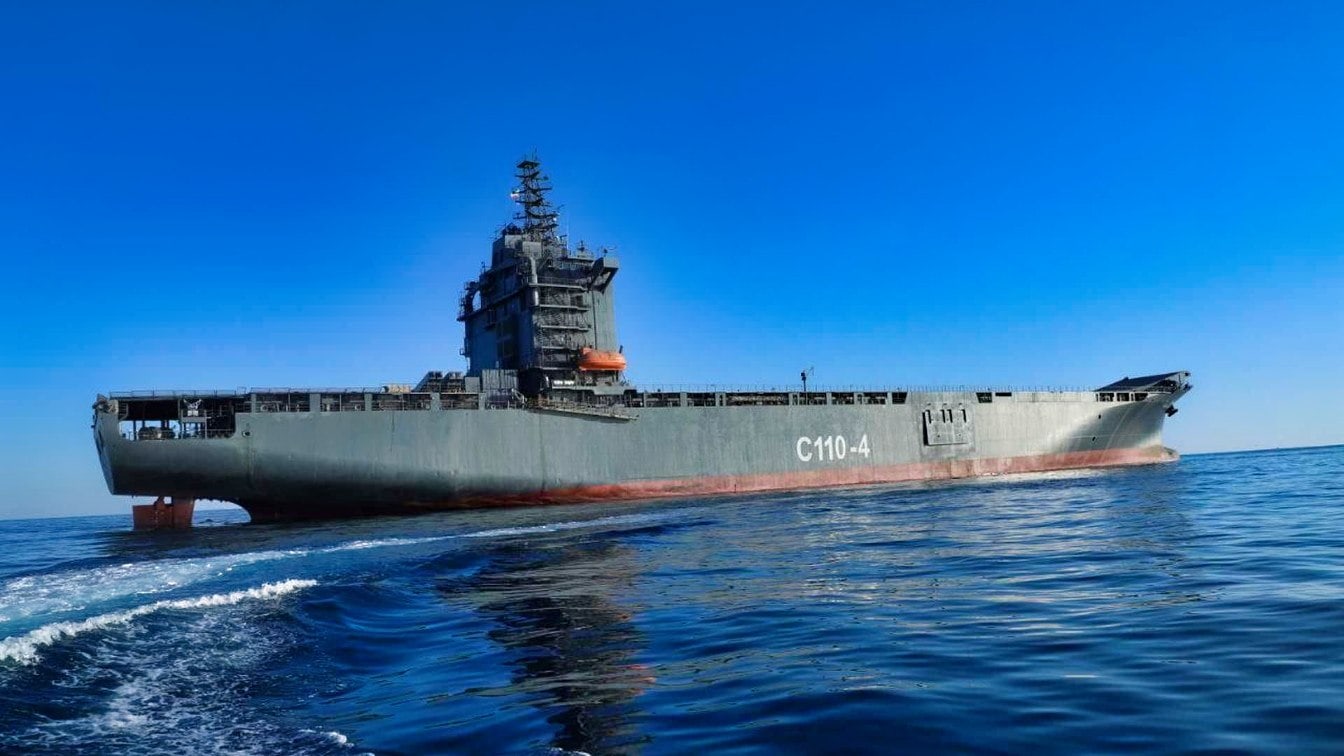Iran Fashions Its Own ‘Floating Sea Base’ – Don’t Call It a Aircraft Carrier
Countries around the world love aircraft carriers. They are a symbol of military might and national pride that can project power around the world. The United States leads the world in carrier aviation. China likes to think it is catching up, and even France has a quality flat-top with nuclear power now sailing in East Asia.
But what if I told you that Iran just deployed its own aircraft carrier, and it even conducted flight deck operations recently?
Built on a Commercial Ship
To be sure, this curious ship is no supercarrier with stealth fighters and nuclear power. It is built on top of a container ship, and the aircraft are drones and helicopters. But give Iran credit for the ingenuity and patience to squeeze the most military power out of this interesting, multi-faceted vessel.
Big News for the IRGC Naval Branch
The Shahid Bagheri is more of a “drone” carrier with a ski-jump on the bow. Unmanned craft have taken off and landed with an arresting hook. This new vessel is quite a departure for the naval arm of the Islamic Revolutionary Guard Corps, which is mainly known for its small gnat-like boats that swarm and harass shipping in the Persian Gulf.
The Main Ship-launched Drone Is Not Bad
The Iranians are conducting flight deck operations with an unmanned system called the modified HESA Ababil-3. This is mainly an intelligence, surveillance, and reconnaissance drone with decent loitering time with its twin turbojet engines. The Ababil-3 can deploy with small armaments. It was introduced in the early 2000s.
The Iranians believe their “carrier” can function as a floating sea base, and it even launched a small tactical boat in state-run media videos that the Iranian government released this week.
The Shahid Bagheri has a 590-foot flight deck, which is about half the size of a U.S. supercarrier. The drone carrier also launched a JAS-313 remotely-piloted craft, a “scaled version of the Qaher-313 project,” according to an X post.
The nascent carrier has an elevator for the aircraft, which is a development. It shows the Iranians are trying to make this vessel the most modern floating sea base that its defense industry could construct.
More Unmanned Systems Are Onboard
“Other types of drones are also seen on Shahid Bagheri‘s deck in the imagery from today’s ceremony, such as the Mohajer-6, another popular Iranian design in service in Iran and many other places globally, including now with the Russian armed forces. American-designed Bell Model 206 and Model 212 helicopters, as well as Russian-made Mi-17 Hips, are seen operating from the ship’s flight deck. Despite the aforementioned clip of the aircraft elevator, no views have yet emerged of any internal aircraft hangars,” according to the WarZone.
Large doors can deploy the patrol and swarming boats on each side of the ship. The Iranians are likely to develop unmanned surface vehicles and underwater drones to be outfitted on the vessel.
It Can Play Offense and Defense
The drone and helicopter carrier has defenses on board. What looks to be anti-ship cruise missiles and cannons for self-defense are located around the vessel. There are also missile launchers for anti-aircraft purposes.
Iran has clawed its way into the carrier era. However, the drones are not that powerful, and the helicopters are more for show. The anti-ship cruise missiles worry me more than the drones and helicopters. The boat launch capability is noteworthy and makes it into a semi-robust ship.
Iran can use these videos and images for propaganda effect with its citizenry, which reminds you how countries can make carriers the symbol of national pride.
The jury is still out on this ship. It is difficult to see how it could change the balance in the Middle East and compete with the United States in carrier operations. For fighters to fly off the deck, Iran must develop a vertical take-off and landing jet for its aviation wing. They would have to purchase that on the export market. However, an Iranian defense minister has said his country can produce a homegrown jump jet. Look for Iran to pursue this option immediately.

A Sea Harrier FA2 of 801 Squadron is seen hovering above the deck of HMS Illustrious. 801 Naval Air Squadron (NAS) was the last Fleet Air Arm squadron to operate the Sea Harrier FA2. After a very successful drawdown and decommissioning ceremony, the final Sea Harrier was withdrawn from service on 31 March 2006 at RNAS Yeovilton and the Squadron disbanded. 801 NAS will be recommissioned in October 2006, to operate the Harrier GR7 and GR9 from RAF Cottesmore. 801 NAS will be joining the recently commissioned 800 NAS as well as 1 and IV (AC) Sqns RAF to complete the formation of Joint Force Harrier (JFH). Organization: Royal Navy Object Name: VL05_0420_065 Keywords: 801 NAS, HMS Illustrious , FA2, Sea Harrier, Joint Force Harrier, Aircraft carrier, Sunshine Country: UK
Iran will then have to depend on the drones described above. Until they get a VTOL fighter to take off and land from this carrier, it cannot be considered the real McCoy. But give the Iranians some props for hanging in there and developing this ship on a shoestring budget and doing it while under international sanctions. This will be a bragging point for the Iranian government for years.
About the Author: Dr. Brent M. Eastwood
Brent M. Eastwood, PhD, is the author of Don’t Turn Your Back On the World: a Conservative Foreign Policy and Humans, Machines, and Data: Future Trends in Warfare, plus two other books. Brent was the founder and CEO of a tech firm that predicted world events using artificial intelligence. He served as a legislative fellow for U.S. Senator Tim Scott and advised the senator on defense and foreign policy issues. He has taught at American University, George Washington University, and George Mason University. Brent is a former U.S. Army Infantry officer. He can be followed on X @BMEastwood.

